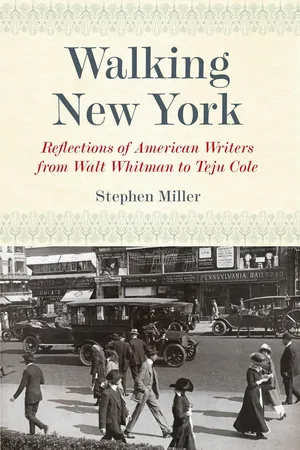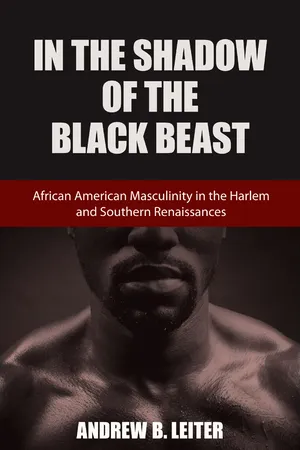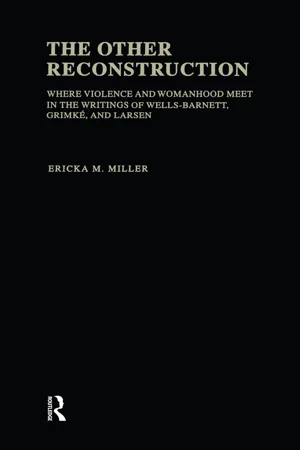History
James Weldon Johnson
James Weldon Johnson was an American author, educator, lawyer, diplomat, songwriter, and civil rights activist. He was a prominent figure in the Harlem Renaissance, a cultural movement that celebrated African American art, literature, and music in the 1920s and 1930s. Johnson's most famous work is the poem "Lift Every Voice and Sing," which became known as the "Negro National Anthem."
Written by Perlego with AI-assistance
Related key terms
5 Key excerpts on "James Weldon Johnson"
- eBook - ePub
- Gene Andrew Jarrett(Author)
- 2014(Publication Date)
- Wiley-Blackwell(Publisher)
James Weldon Johnson (1871–1938)Few were as influential as James Weldon Johnson was over the generation of writers coming of age in the New Negro Renaissance. In addition to the novel he published first anonymously in 1912 and then under his own name in 1927,The Autobiography of an Ex-Colored Man, Johnson authored multiple books of poetry, a pioneering work of cultural history, an autobiography, and a book on race relations. He also edited the first major anthology of African American poetry and two anthologies of African American sacred music. Not only a man of letters, he was also a successful songwriter, a lawyer, and a diplomat. A “renaissance man” rivaled perhaps only by W.E.B. Du Bois and Alain Locke, he also served as United States consul to Venezuela and Nicaragua, and for a decade was the field secretary of the National Association for the Advancement of Colored People (NAACP). Of the novels published by African American writers between the Civil War and the New Negro Renaissance, none would have agreater impact upon the subsequent shape of African American fiction than Johnson’s The Autobiography of an Ex-Colored Man .James Williams Johnson was born in Jacksonville, Florida, in 1871, the second of three children in a middle-class household. His parents, James and Helen Louise (Dillet) Johnson, had emigrated from the Bahamas in 1866. His father served as a head waiter in a luxury hotel, while his mother was the first African American female public school teacher in Florida. Young James graduated at age 16 from Jacksonville’s largest all-black grammar school, the Stanton School, and enrolled in 1887 at Atlanta University. There he excelled, both as an outstanding scholar-athlete (he delivered the commencement oration in 1894) and as a member of the Atlanta University Quartet that toured New England during the long vacations. After college, Johnson returned to Jacksonville to become principal of his former grammar school, serving from 1894 until 1901. During this time he founded and edited a newspaper, The Daily American (1895–1896), and, in 1898, became the first African American lawyer admitted to the bar in Duval County, Florida. Johnson formed a legal partnership with Judson Douglas Wetmore, an old friend from Atlanta University who had passed for white at the School of Law at the University of Michigan, and twice married a white woman. Most scholars agree that the protagonist of The Autobiography - eBook - ePub
Walking New York
Reflections of American Writers from Walt Whitman to Teju Cole
- Stephen Miller(Author)
- 2014(Publication Date)
- Empire State Editions(Publisher)
30On July 28, 1917, Johnson organized an unusual march in New York. He and W. E. B. Du Bois led a silent parade of ten thousand people up Fifth Avenue. They were protesting the recent race riots in East St. Louis, where whites killed roughly one hundred blacks and drove six thousand from their homes. They also were protesting lynching, which still occurred on a regular basis in the South. “The streets of New York have witnessed many strange sights,” Johnson writes, “but … never one stranger than this.… The parade moved in silence and was watched in silence.” African American Boy Scouts distributed printed circulars that explained why there was a silent march. “We march because we are thoroughly opposed to Jim-Crow Cars, Segregation, Discrimination, Disfranchisement, LYNCHING , and the host of evils that are forced on us.”31In his work for the NAACP, Johnson combatted racism, which he thought “involves the saving of black America’s body and white America’s soul.” In his writing, Johnson had a different aim: to persuade blacks and whites that blacks had made an immense contribution to American culture. “The only things artistic in America that have sprung from American soil, permeated American life, and been universally acknowledged as distinctively American, had been the creations of the American Negro.”32Blacks, Johnson argued, have been most influential in the area of popular culture. In the “Preface” to The Book of American Negro Poetry (1922), Johnson mentions several popular dances that originated in the black community, but he mainly discusses black music: ragtime, the blues, and Negro spirituals, which he also calls “slave songs” and “Negro folksongs.” He is struck by wonder every time he hears these songs. “The sentiments are easily accounted for; they are, for the most part, taken from the Bible. But the melodies, where did they come from? Some of them so weirdly sweet, and others so wonderfully strong.” In 1917, he argued that “the finest contribution that this country could offer as its own to the world was the American Negro spirituals.”33 In 1925, he and Rosamond published The Book of American Negro Spirituals - eBook - ePub
In the Shadow of the Black Beast
African American Masculinity in the Harlem and Southern Renaissances
- Andrew B. Leiter(Author)
- 2010(Publication Date)
- LSU Press(Publisher)
Born to a middle-class family in Jacksonville, Florida, in 1871, Johnson atended Atlanta University and then served as principal of an African American school in Jacksonville. He founded a short-lived newspaper, The Daily American, before becoming the first African American from Duval County to pass the Florida bar in 1898. He enjoyed a successful career as a songwriter, and, with his brother Rosamond, he wrote “Lift Every Voice and Sing,” which would become known as the Negro national anthem. Johnson served as the U.S. consul to Venezuela and Nicaragua, and during this period he wrote his novel, The Autobiography of an Ex-Colored Man. By 1918, he had resigned from consular service, worked as a contributing editor to the New York Age, translated an opera, joined the staff of the fedgling NAACP, and published a book of poetry, Fifty Years and Other Poems (1917). Johnson would remain active for the rest of his life both as a leading African American political voice in his role with the NAACP and as a prominent figure in African American literature who facilitated the careers of talented young writers, while continuing to produce significant literature of his own, most notably, God’s Trombones (1927). During this storied career, Johnson’s foray into fiction appeared to be simply one accomplishment among so many others. The Autobiography of an Ex-Colored Man, however, has since taken a place among American literary classics. James Weldon Johnson and the Troubling Redemption of Black Masculinity When Frederick Douglass visited Jacksonville, Florida, in 1886 to deliver a speech for the Sub-Tropical Exposition, a teenaged James Weldon Johnson attended the event, and years later in his autobiography Along This Way (1933), he would recall Douglass’s powerful presence and “supreme eloquence.” In particular, Johnson remembers Douglass addressing the criticisms regarding his marriage to Helen Pitts, who was white: One statement.. - eBook - ePub
Artistic Ambassadors
Literary and International Representation of the New Negro Era
- Brian Russell Roberts(Author)
- 2013(Publication Date)
- University of Virginia Press(Publisher)
1 Out of this earlier diplomatic milieu, the novel emerged not only as a treatment of the phenomenon of racial passing, as it has traditionally been read, but also as a geopolitically inspired literary exploration of the type of strategic indirection Johnson later influentially imported into the Harlem Renaissance.The Poetics of RevolutionWith the aid of Booker T. Washington, Johnson in 1906 received a consular appointment that transformed his image from that of a bohemian songwriter-musician to a “race man of merit” (Goldsby, “Keeping” 254). Working as a consul situated Johnson as a participant in the United States’ interventionist program for Latin America, and this was especially true during his time in Corinto. His consular notebooks reveal that as the United States plotted to overthrow the Nicaraguan president, Johnson surveilled the activities of Nicaraguan gunboats, wrote reports for the State Department on these activities, and used a secret code to convey the intelligence to the captain of a US gunboat that visited Corinto repeatedly.2 After a US-supported revolution successfully overthrew the Nicaraguan president, Johnson spent time evaluating counterrevolutionary sentiment among Nicaraguans, thereby supporting the United States’ efforts to arrange for the rise of a US-friendly Nicaraguan leader. In November 1910, for example, Johnson sent the State Department a translation of one of many newspaper “articles of an incendiary nature regarding what [anti-US Nicaraguans] term ‘The American Intervention.’” This article quoted a “young man” who declared, “Gentlemen, here is my hand, it is ready to do justice, with it I shall bury my dagger…into the heart of that yankee, who comes to give our country over to those infamous [US-backed Nicaraguan] traitors.…I shall kill him as I would a sick dog, in order to make a warning so that the yankees may know how a weak people answers the brutal impositions of force.” Johnson explained to the State Department, “Such articles are being published daily, and are well calculated to inflame and incite certain elements in the population.” He believed articles of this ilk were responsible for occurrences such as a recent anti-US riot in the nearby city of Leon.3 In spite of these riots, the United States successfully arranged for the former clerk of a US company to assume the Nicaraguan presidency. This move further incensed many Nicaraguans and prompted a revolt that was poised to overtake the town of Corinto, where Johnson worked as the chief US representative. Under intense pressure, Johnson’s facility with rhetorical posturing allowed him successfully to stall the insurgency and thereby to buy time for the landing of twenty-six hundred US Marines for the new president’s protection.4 Johnson later recalled that while in Latin America, he knew the United States should never have intervened in Nicaraguan affairs (Along 283), but he also felt at the time that diplomatic service honed his “intellect and character”5 - eBook - ePub
The Other Reconstruction
Where Violence and Womanhood Meet in the Writings of Ida B. Wells-Barnett, Angelina Weld Grimke, and Nella Larsen
- Ericka M. Miller(Author)
- 2020(Publication Date)
- Routledge(Publisher)
Though perhaps best known as a creative writer, James Weldon Johnson was also a journalist, a songwriter, and a diplomat. As William Andrews and John Hope Franklin note, Johnson also participated actively in the struggle for Negro equality on the political front. Upon assuming his role as national organizer for the NAACP in 1916, James Weldon Johnson became an outspoken anti-lynching advocate. On July 28, 1917, he led ten thousand black Americans in a silent parade in New York City to protest the race riots and lynchings that flourished nationwide after World War I. In 1920 he became the first black executive secretary of the NAACP, a position he held for ten years. Tirelessly he lobbied Congress for two years on the Dyer anti-lynching bill (1921–22), which the House of Representatives passed but the Senate rejected. Ten years prior to arguing before legislators in Washington, however, he wrote a novel.The Autobiography of an Ex-Colored Man is a first-person story written from the perspective of a nameless narrator, the son of a Southern white man and his black female servant. Encompassing the ex-colored man’s life from early childhood through adulthood, the narrative captures his experiences and perceptions as an individual moving back and forth across the color line in the United States and abroad at the turn of the century. Light enough to pass for white, at times the ex-colored man does just that, until those moments at which he recognizes some advantage to claiming his Negro ancestry. By necessity an exceedingly private individual, the ex-colored man reflects upon his encounters often with the detached eye of both a sociologist and an entrepreneur. Though a reader of types when assessing others, his self-perception resists an externally imposed singular racial identification throughout most of the text.The publication date of James Weldon Johnson’s Autobiography of an Ex-Colored Man, 1912, is crucial to an understanding of why this book remains such a rich historical document in the study of racial identity and anxiety in the United States at the time of its publication. Prior to 1863, the extrajudicial sociopolitical status of Negroes in relation to whites inspired little debate, for the condition of the slave was firmly inscribed in the law—Negroes had no citizenship and therefore were not entitled to rights granted to American citizens under the Constitution. Hence, the law clearly stated that blacks were inferior.3 With the Thirteenth Amendment came the legal prohibition of slavery as such, but as we see in cases such as Plessy v. Ferguson
Learn about this page
Index pages curate the most relevant extracts from our library of academic textbooks. They’ve been created using an in-house natural language model (NLM), each adding context and meaning to key research topics.




